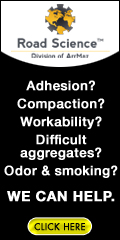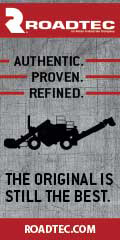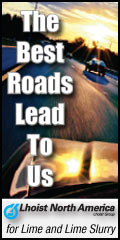| Thursday, December 31, 2015 | ||
 |
 |
 |
| Past Issues | www.texasasphalt.org | Printer-Friendly | Subscribe | Advertise |
EHS Brief - Safety
OSHA's Top 10 Safety Violations of 2015
The OSHA Top 10 list is a road map that identifies the hazards you want to avoid on the journey to safety excellence. Take a look at these and then look at your organization’s incidents and see if your incidents fall within one of these categories. If so, then you know where to focus your safety efforts and dollars. The number beside the category represents the number of citations given as a result of OSHA workplace inspections so far in 2015.
Note: OSHA performed 36,163 inspections in 2014. Based on the above, 34,436 citations (just a little over 95 percent of the inspections) resulted in at least one citation.
OSHA's Tightening Temp Rules
Companies that use temporary employees, either through staffing agencies or subcontractors, should pay close attention to recent policy changes that could increase their safety and training obligations as joint employers. In September, the National Labor Relations Board ruled that companies that use temporary workers are considered "joint employers" and share responsibility with the temp or subcontracting agency for those workers. The rule no longer requires that companies exercise direct control over temp workers to be considered joint employers. Instead, merely having the authority to control qualifies them as joint employers.
OSHA has its own rules regarding temporary workers, so it’s not yet clear how the NLRB decision will apply to OSHA regulations but OSHA’s rules are moving toward more joint employer responsibility on the part of the parent company (this would be the company hiring the temporary worker or subcontractor).
Currently, the company that directs a temp employee’s day-to-day activities is the primary employer in OSHA’s eyes. But that could change with the NLRB decision, broadening the parent company’s responsibility if it merely has the authority to control-even if it does not exercise that authority.
With these two decisions, you have to look at temporary employees as essentially the same as your employees. You want to treat them the same. For OSHA record keeping, if you have temporary employees in your workplace, they go into your OSHA [reports].
New data show rate of most serious work injuries unchanged; overall rate drops slightly
The Bureau of Labor Statistics' Survey of Occupational Injuries and Illnesses, released Oct. 29, shows that 4,679 work-related deaths occurred in 2014 with private industry employers reporting nearly 3 million non-fatal workplace injuries and illnesses in 2014. While the incidence rate of total recordable cases fell slightly, the rates for cases involving days away from work (Lost Time) and for cases of job transfer or restriction were unchanged. After reviewing the report, Assistant Secretary of Labor for Occupational Safety and Health Dr. David Michaels issued a statement on the need to better protect workers: "OSHA is committed to continue increased efforts to ensure every employer is fulfilling its responsibility to protect the safety and health of its workers."
Translation: More enforcement with stiffer penalties for violations and potential prison terms for Company management. All the more need to beef up safety programs, protect our workers and save money. Environmental Spill Reporting Many members have hot mix plants, trucks that transport equipment and mix to and from job sites and various types of equipment to lay and handle mix and other substances associated with paving operations. What is common to all of these is that they carry and consume fuels and require various oils and lubricants to operate. So what happens if there is a break in a hydraulic line or a puncture of a fuel tank? Never happens...right? So...what do you do?
Finally, train your employees on how to address spills and have a plan in place to address larger spills. It is good practice to have a contract in place with a spill cleanup company in the event that a spill requires more specialized measures for clean-up. This will save time and money if such an event occurs. |
Asphalt: Smooth | Durable | Quiet | Safe





